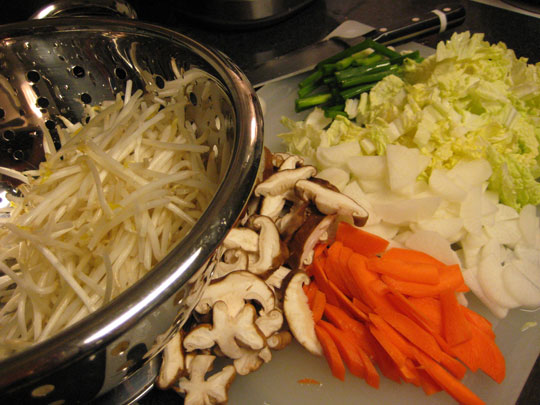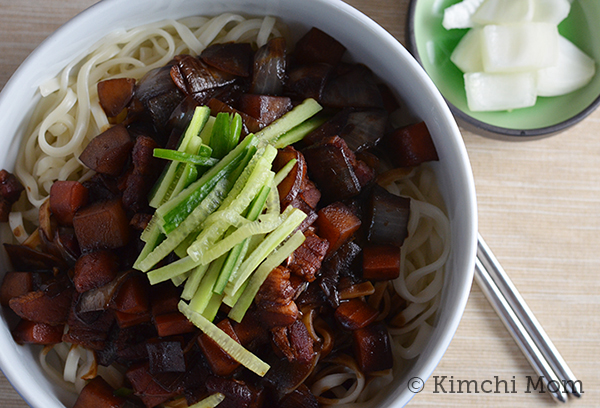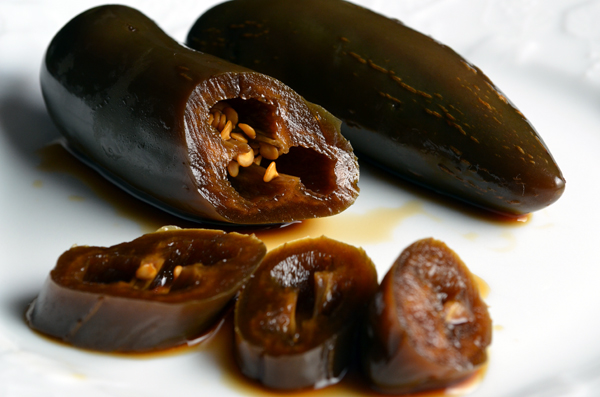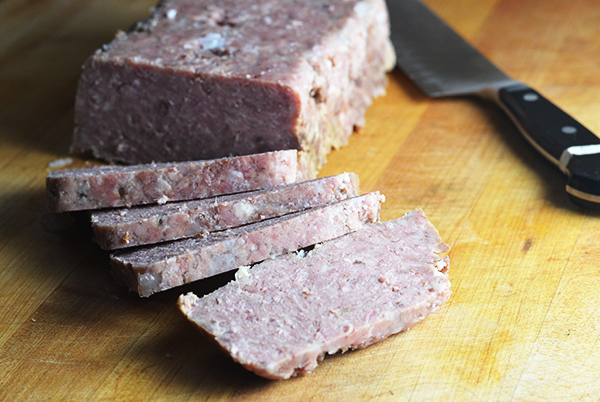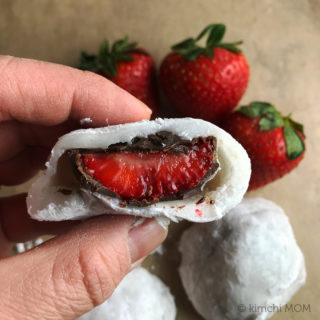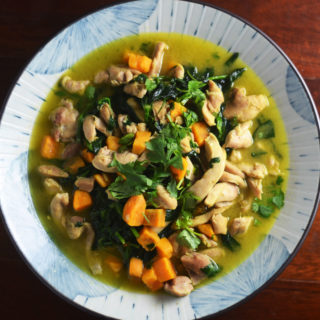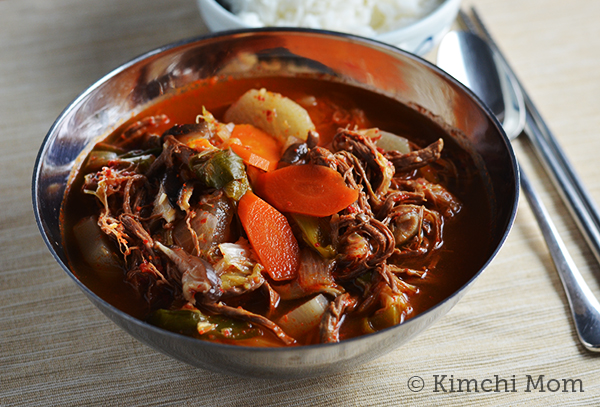 Korean spicy beef and veggie soup otherwise known as yukgaejang is my all-time favorite dish. Whenever I visited home, my mom would have a pot of it ready and I would pretty much eat it for every meal during my stay. For me, this dish is home. Even now when she visits, regardless of the length of her stay, she will make a pot of it! She has also perfected making a vegetarian version for my dad. Go mom!
Korean spicy beef and veggie soup otherwise known as yukgaejang is my all-time favorite dish. Whenever I visited home, my mom would have a pot of it ready and I would pretty much eat it for every meal during my stay. For me, this dish is home. Even now when she visits, regardless of the length of her stay, she will make a pot of it! She has also perfected making a vegetarian version for my dad. Go mom!
Although this is my mom’s recipe, it’s taken me years to replicate. I’ve come close, but it still doesn’t have that certain touch that moms only have. Although this recipe does not include the gosari (fernbracken) or dang myun (vermicelli), you can certainly add it to the soup. It does, however, include Napa cabbage and carrots which you don’t find in restaurant versions of the soup. I usually make a huge batch and freeze most of it.
Yukgaejang (Korean Beef and Vegetable Soup)
Ingredients
- Broth:
- 12 c. water
- 1 lb. beef flank
- Sauce:
- 4 garlic cloves
- 4 T. fine red pepper powder
- 2 T. soy sauce
- 2 t. sesame oil
- 1 t. salt I tend not to add too much…you can add more later
- Pinch of black pepper
- 1/4 c. water
- Vegetables:
- 8 oz mung bean sprouts
- ¼ of a small head of napa cabbage cut in 1-inch sections
- 1 med. carrot thinly sliced on a diagonal
- 8 shiitake mushrooms or about ¼ lb sliced
- 8 oz daikon or Korean radish thinly sliced
- 4-5 stalks of green onion cut in 2-inch sections
Instructions
- Soak beef in unsalted cold water for about 20-30 minutes until water is pink with blood. Make sure the beef is completely submerged.
- Drain and rinse the beef and place it into a pot of water. Bring it to a boil and let simmer for about 1 1/2 to 2 hours or until beef is really tender. Remove beef and let cool. Set pot of broth aside.
- Pull apart and shred the beef along the grain. Mix the ingredients for the sauce. Add shredded beef and mix until coated. Set aside for at least an hour.
- Bring the broth to a boil. Add all the vegetables (except for green onions) and let simmer for about 20-30 minutes.
- Add the beef and any remaining sauce. Add green onions and let simmer for another 5 minutes.
- Serve in a large soup bowl. Add salt to taste. A serving of steamed white rice is the perfect accompaniment.
As I have mentioned in previous posts, I have several cookbooks on Korean cuisine. The one I usually refer to is called “Discovering Korean Cuisine: Recipes from the Best Korean Restaurants in Los Angeles”, edited by Allisa Park. The photographs are great and each recipe is accompanied by many photos. I think all cookbooks should be loaded with photos! They even include a visual glossary of ingredients. Nothing is dumbed down and the recipes are easy to follow. The book is pretty good about covering all the restaurant standards and even includes a section on desserts.
